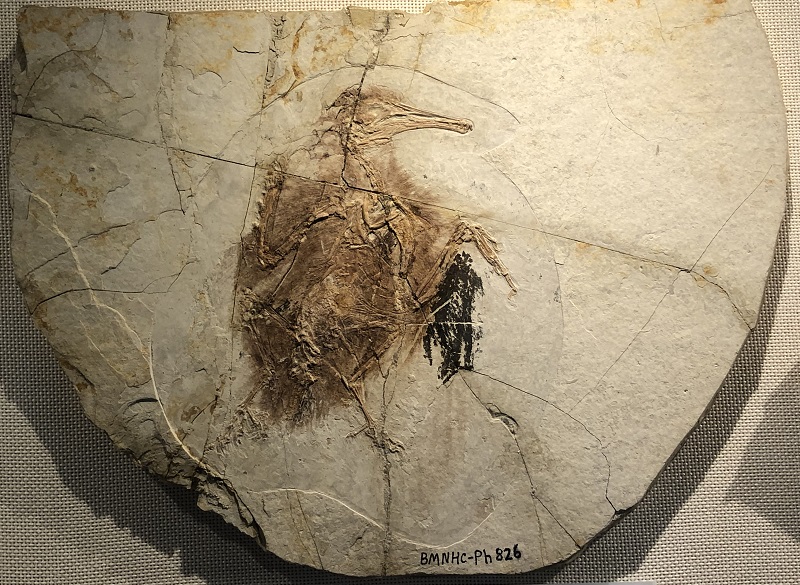BH Staff | May 12, 2023
Age and Locality: Early Cretaceous, Liaoning Province.

Longipteryx chaoyangensis is an extinct species of bird that lived during the Early Cretaceous period, approximately 120 million years ago. It is known from fossils found in the Jiufotang Formation of Liaoning Province, China, which is part of the famous Jehol Biota that provides crucial insights into the diversity of life during the Cretaceous period.
This ancient bird is remarkable for its relatively long, pointed wings and elongated tail, features that suggest it was well-adapted for powered flight. The genus name “Longipteryx” translates to “long wing,” highlighting one of its most distinctive physical traits. With a wingspan estimated to be around 30 cm (12 inches), Longipteryx chaoyangensis was a small bird, but its aerodynamic body shape indicates it could have been an agile flyer, capable of quick maneuvers in the air.
One of the most intriguing aspects of Longipteryx chaoyangensis is its unique beak. Unlike the beaks of most other early birds and their dinosaur ancestors, which were either filled with teeth or completely toothless, the beak of Longipteryx was long, narrow, and tipped with a small number of teeth at the front. This adaptation suggests it had a specialized feeding strategy, possibly plucking insects from the air or water surface.
The discovery of Longipteryx chaoyangensis has provided valuable information about the ecological niches early birds occupied and their evolutionary adaptations for flight and feeding. Its distinct morphology, especially the combination of its long wings and specialized beak, adds to our understanding of the diversity and adaptability of prehistoric bird life during the Early Cretaceous period.
